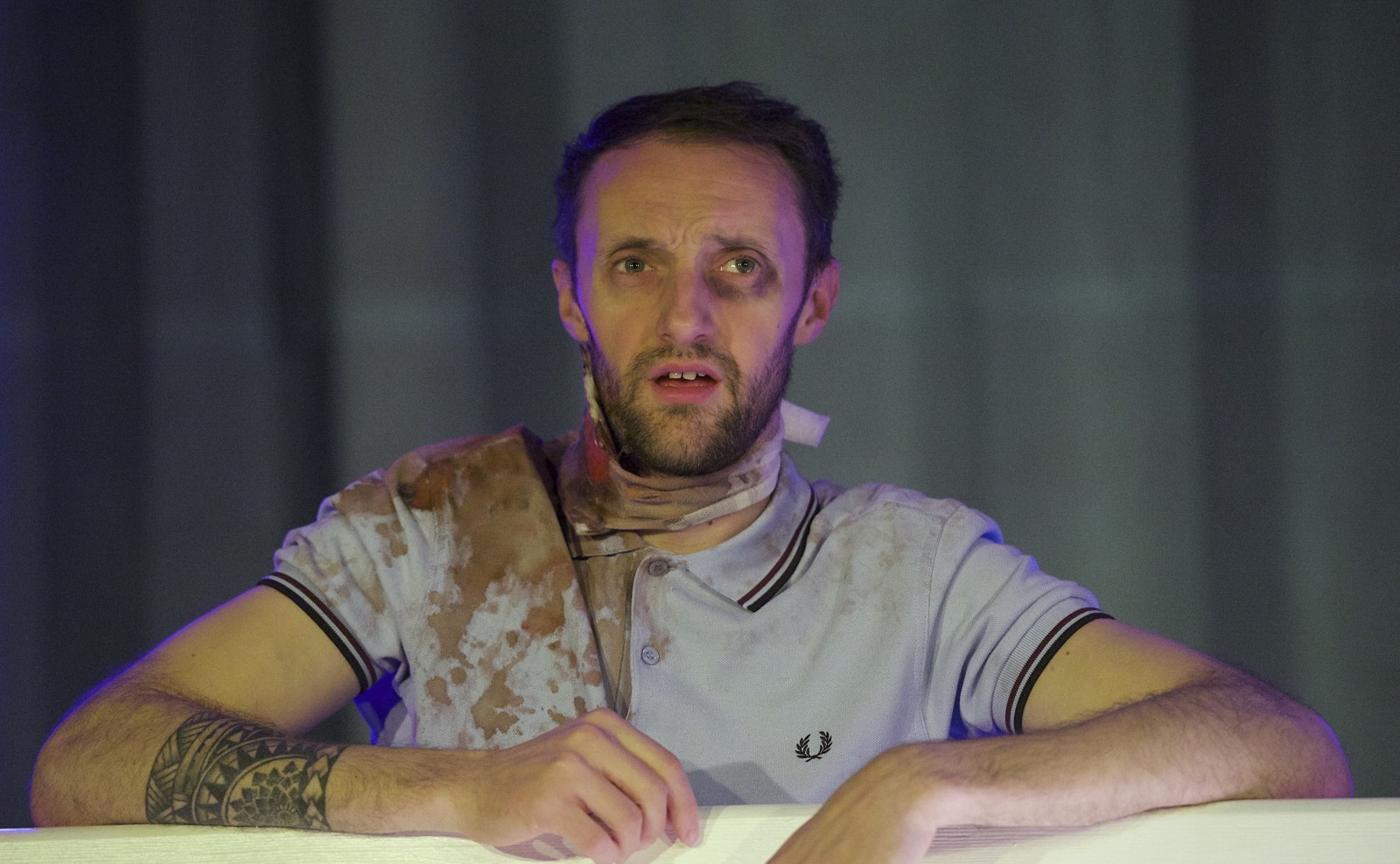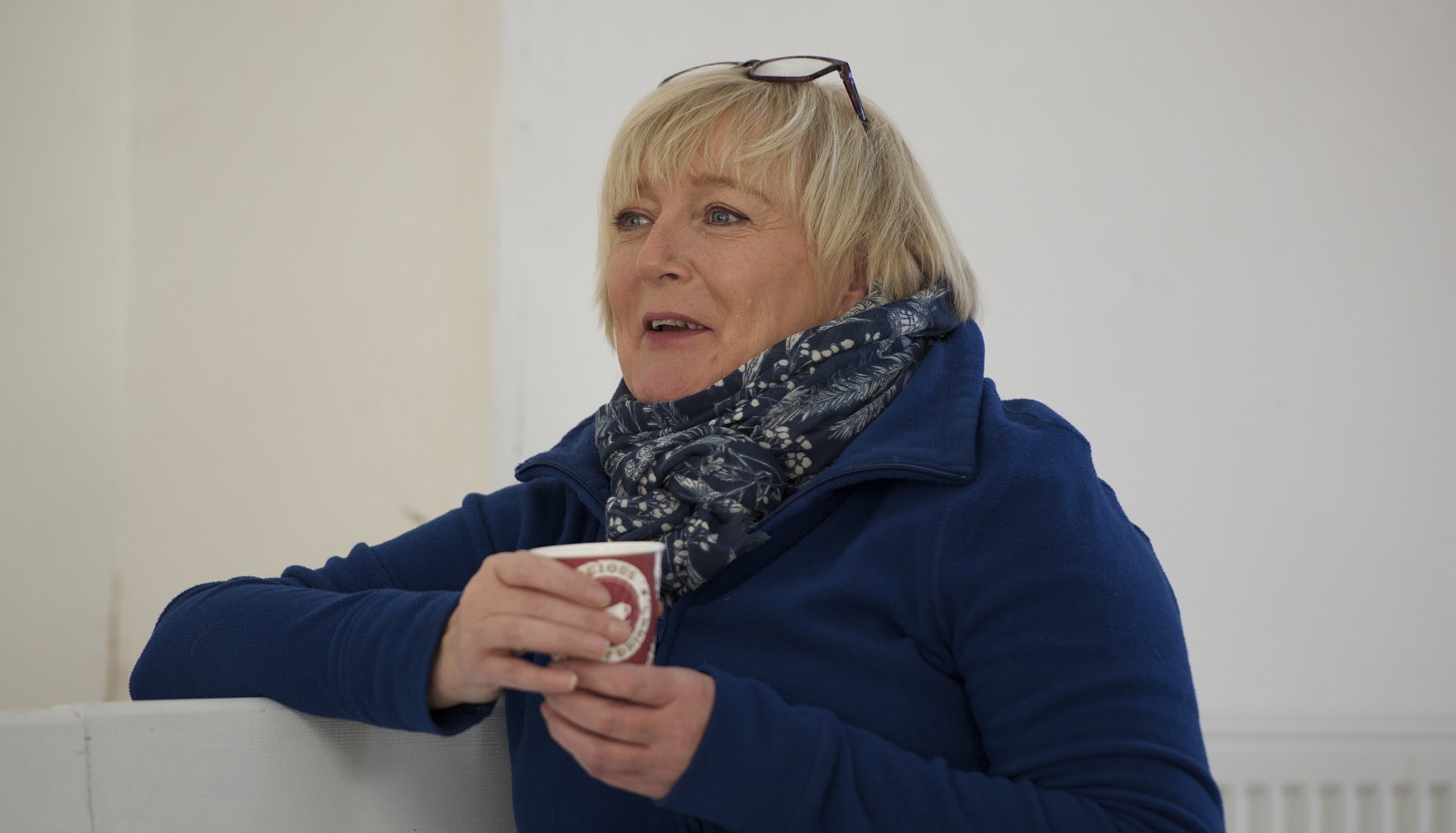Yorkshire Sculpture International 2019 is an event described as 100 Days, 4 Galleries, 2 Cities, 1 Festival. The 100 days are from 22nd June until 29th September; the 4 galleries are Henry Moore Institute Leeds, Leeds Art Gallery, The Hepworth Wakefield and the Yorkshire Sculpture Park. From this you will have gathered that the 2 Cities are Leeds and Wakefield and I won’t insult your intelligence by naming the festival.
Although not beginning for another month or so, there is a sneak preview of some of the artists’ work at the Yorkshire Sculpture Park at West Bretton just outside Wakefield. I had a trip to see what was on offer and it was a great day out. It has to be said that YSP is not the easiest place to get to on public transport as, although it’s fairly simple to get to Wakefield Bus Station, the connecting bus to the park, no 96, only runs very infrequently and the one at 11.05, which I aimed to get, either left early or did not run at all, despite the assurances from South Yorkshire Transport, having checked with the operator, that it had. Rather than wait for an hour and a half for the next one to possibly come, I took the bus to West Bretton roundabout which entailed a walk of about a mile to the park. Car drivers are well catered for with plenty of parking. The car park fee doubles as an entry charge, so if you want to go on your own it will cost you £12 for the day, but if you can get three friends to accompany you it will work out at £3 apiece – a veritable bargain.
The next thing to be said about the venue is the lack of any catalogues or concise information which you can use to find the exhibits. There were a couple of faded posters at the park entrance, but on entering the Visitor Centre there was no leaflet or booklet to let you know what was on offer and where. There was a free map available and a helpful lady behind the counter marked mine with the location of the Damien Hirst exhibits. Had I not known about them in advance, and they not being so huge, I would have been unaware of their existence. Moan over, I picked up my map and went for a wander in the direction of The Chapel, which was where an installation called To Breathe by Kimsooja was housed. Again I only knew this from a poster in the Visitor Centre.
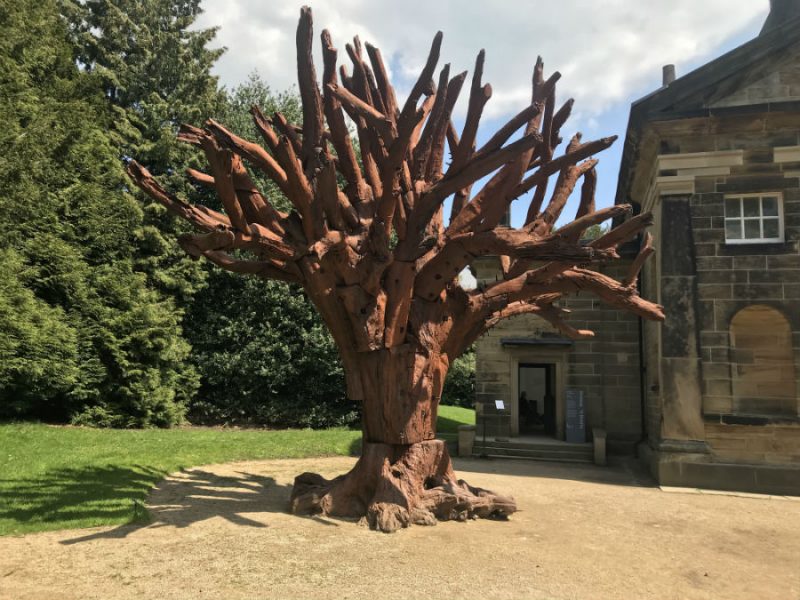
When I arrived at The Chapel, via a few Henry Moore works and a large metal oblong structure which, judging by the only sign I saw, seemed to be titled Climbing Strictly Forbidden, I was pleasantly surprised to find a work by Ai Weiwei called Iron Tree, which describes it perfectly. The ‘tree’ stands in the garden outside the front door and fits beautifully into its surroundings. The idea is that being iron, which is a material subject to corrosion, it will degrade over time in an organic manner to reflect nature.
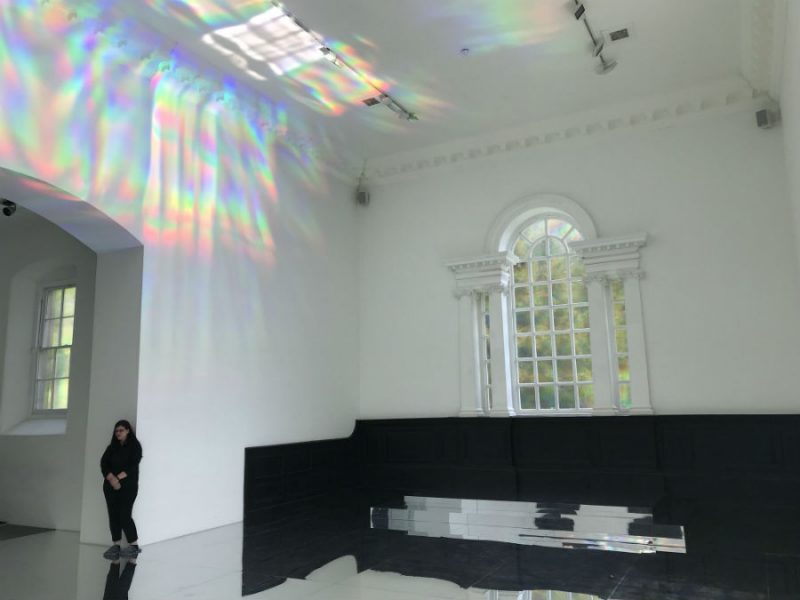
On entering The Chapel I was told that if I wanted to go into the space I would need to remove my shoes as the floor is high gloss, almost to a mirror finish. The installation is a totally bare room save for two shallow steps made from reflective material and forming a low stage. I was advised that should I choose to climb them, to be careful coming down as the perspective was disorientating . The room was painted black and white and the windows had been coated with a film which polarised the light coming in, thus splitting the spectrum like a prism. Fortunately, there was strong sunlight outside or I believe that some of the effect would have been lost.
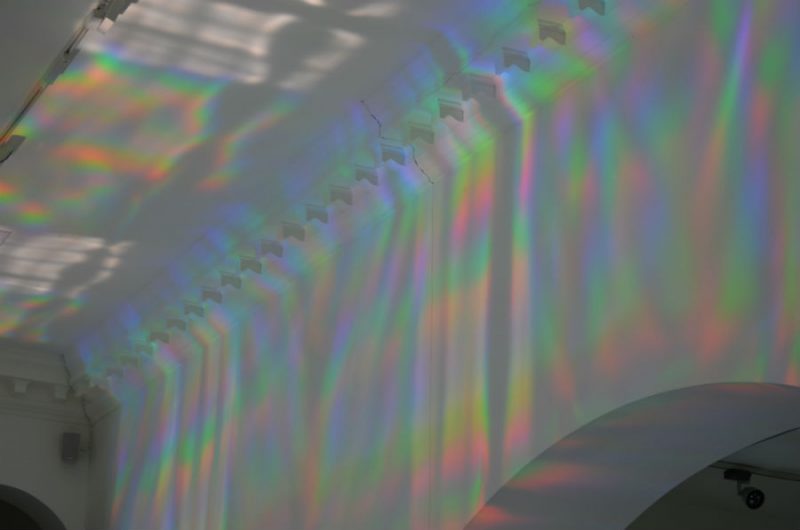
Aside from another chap who was taking photographs, I had the place to myself, which heightened the sense of serenity which religious buildings often exude anyway. To add to the experience there was a soundtrack of the artist breathing, which is the source of the title. The breaths started off quietly and slowly but built to a climax before looping. The experience I had was of a very subtle cross between a swinging sixties film trying to recreate an LSD trip, and a porn movie soundtrack. The split spectrum reflected onto the ceiling but was only in a small part of the room. I assume that as the sun moves across the sky then the effect increases, decreases and moves. I was a little underwhelmed.
Fortunately, after my trek to get to the park, the Damien Hirst sculptures were fairly close by so I didn’t need to yomp for miles across the grounds. I am loathe to analyse the meanings of these works as I am sure that they say different things to all who see them.
The first one I came to was The Virgin Mother (feature photograph), a ten-metre tall statue of a pregnant woman based on Degas’ Little Dancer Aged Fourteen. There are four Hirsts in total, with three of them examining the interiors of their subjects. The piece is an orthodox statue on one side but on walking around it you see that the skin has been removed from the head and torso, revealing not only the innards of the woman but also the womb complete with foetus. This becomes very disturbing, especially in the pose struck.
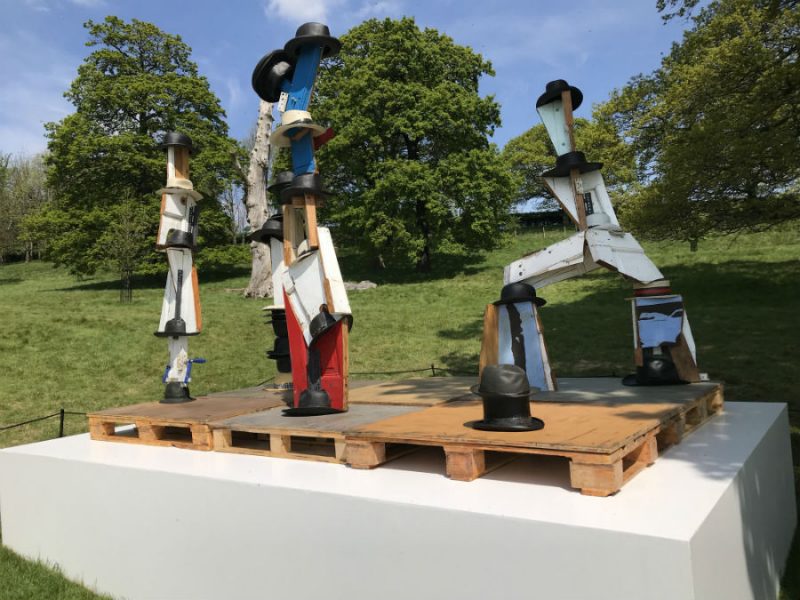
Sculpture number two was an absurdist piece called The Hat Makes The Man and another derivative inspired by a work by Max Ernst from 1920, of cut-out images of hats reassembled into absurd stacks. The inspiration for Ernst was Sigmund Freud, who described the hat as a symbol of repressed male desire, presumably to beret their true feelings.
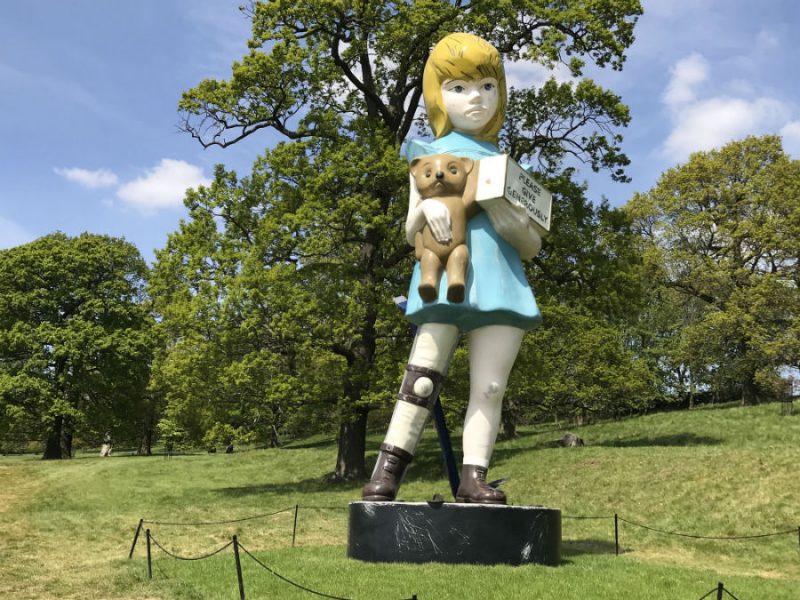
Charity was the next piece on the trail. This is an image familiar to those of a certain age as an interpretation of the small charity collection statuettes placed in the street outside shops or inside large ones asking for donations to the charity now called Scope. From the front it is almost an exact replica, but again Hirst has gone beneath the facade and on being observed from the rear, the money box part has been riven open, presumably by use of the jemmy resting on the back of the girl, and there are a few coins on the plinth, possibly dropped in haste by the thief. The description board says that ’The work questions historic and outdated ways of depicting disability and seeking charity.’ Once again, not my interpretation, which is of the disregard some people have of the plight of others in order to further their own ends, but what do I know?
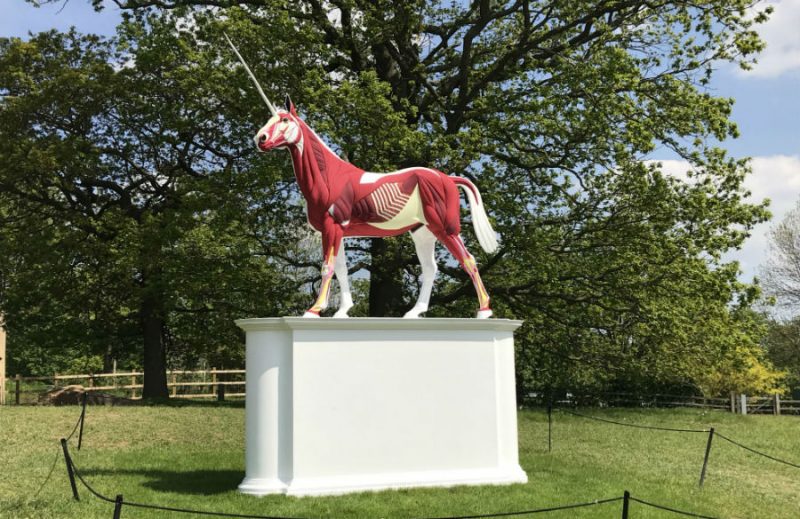
The last of the pieces on show is back to Hirst in flaying mode, but this time it is a unicorn which is given the stripped back treatment . It is called Myth and contrasts the drip white outside of the unicorn with the red and yellow muscles and sinews. The bright sunlight reflecting from the white plinth made this at once vibrant and etherial, depending on the side from which it was viewed. This was described as being a playful nod to art history.
All of the sculptures in the Hirst collection here are made from bronze and then painted to make them look like wood or plastic ‘playing with the grandeur typically associated with the material’. As you might have gathered, I have no pretensions of being a connoisseur of this art form but they certainly made an impression on me, even if it wasn’t the one they were supposed to. As Damien Hirst was brought up in Leeds, he should be only too well aware that displaying his works to a Yorkshire audience will get a down to earth response and very few will admire the Armani suit on the naked king.
Yorkshire Sculpture Park (YSP)’s new £3.6million visitor centre, The Weston, was announced as the winner of RIBA Yorkshire Award 2019 and RIBA Yorkshire Building of the Year Award 2019. YSP also received the special category award for RIBA Yorkshire Client of the Year Award 2019.



